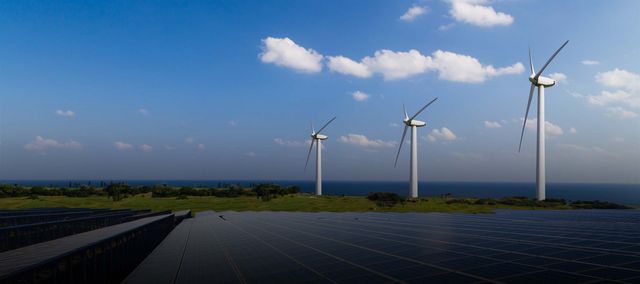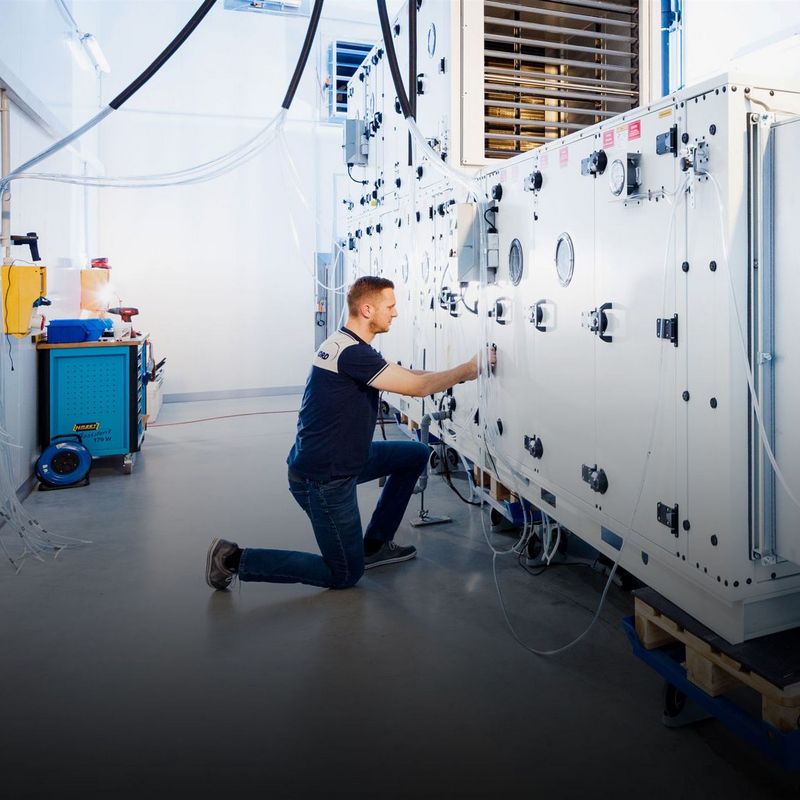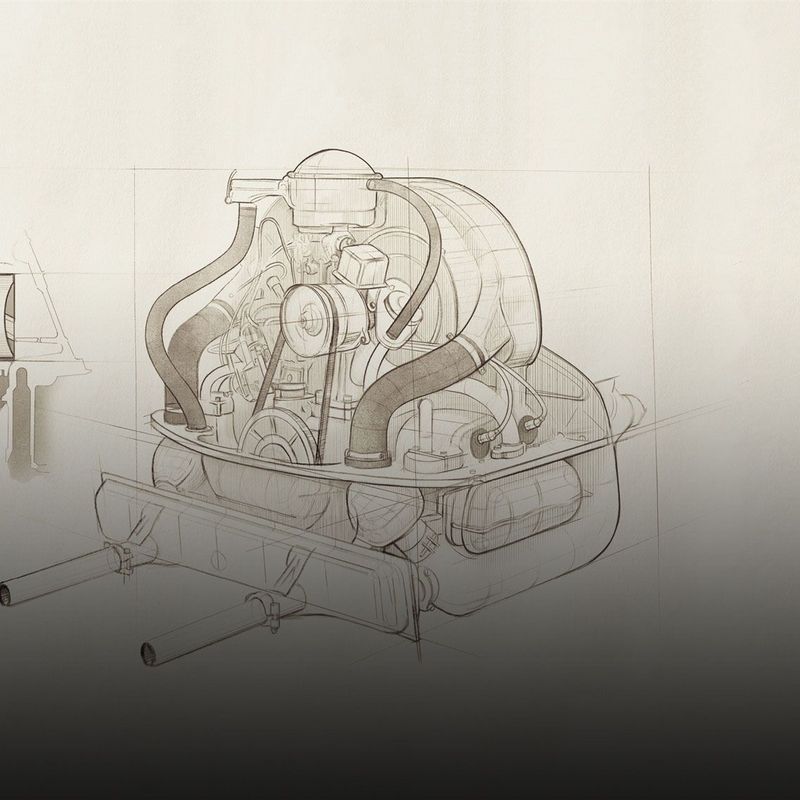17 October 2019
Wind and sun generate clean electricity – but the wind doesn't always blow, and the sun doesn't always shine when you need it. So it follows that, if we want to get most of our energy from renewables in the future, the green electricity thus produced will also need to be stored. But which technologies are available for this, what are their advantages and disadvantages, and how can the clean power supply of tomorrow be secured?
The share of renewable energies in total electricity production has grown steadily in recent years. In 2018, it rose to just under 38 percent. In the first half of 2019, for the first time, wind, sun, water and biomass produced more electricity than coal and nuclear power combined – mainly thanks to an exceptionally windy spring.
By 2030, renewables are intended to cover 65 percent of our electricity needs, and, according to the German government's stated plan, this figure will rise to 80 percent by 2050. The big challenge to be overcome here is the necessary expansion - which is currently stalled - of wind farms and solar plants. On the other hand, unlike conventional power plants, wind turbines and solar panels do not always produce their energy where and when it is needed.
So, in order to ensure that the lights never go out, either at night or on windless days, the green electricity needs to be stored. In fact, a whole range of technologies is already available for power storage - directly and in batteries. Or indirectly, in substances that drive electricity production at a later point, such as water in pumped storage tanks, compressed air in underground salt domes or hydrogen in pressure tanks.
All these technologies have both advantages and disadvantages, and each of them can play a different role in power supply. The matter of which technology is best suited for which purpose is decided by this pivotal question: How much energy is to be stored and for how long?
Battery systems: lightning-fast electricity with (almost) no losses
Batteries, for example, boast the highest efficiency of all storage methods. They can store and release the electricity particularly efficiently. Because battery systems can also feed electricity very quickly back into the grid, they are already in use to provide what is known as balancing power. If the frequency in the AC power grid falls below a certain level, new power sources need to be activated within seconds to stabilise the grid.
Tesla has built the world's largest battery storage facility in southern Australia. This mega-battery with a total output of 100 megawatts (MW) and a capacity of 129 megawatt hours (MWh) is connected to a wind farm and is intended to supply 30,000 households with electricity for up to one hour. The largest battery storage system currently operating in Europe came on stream in Schleswig-Holstein in 2018. In Jardelund, close to the Danish border, Dutch energy supplier Eneco joined forces with the Japanese Mitsubishi group to install a storage facility with a rated output of 46 MW and a capacity of more than 50 MWh. Some 10,000 lithium-ion batteries are installed in the facility – enough to power about 5,300 households for 24 hours.
The world's largest battery storage facility, built in southern Australia, is intended to supply 30,000 households with electricity for up to an hour.
This large-scale battery is in the first instance intended to provide balancing energy. In a next step, the operators are seeking to connect it to the wind farms in the region. The benefit would be that the turbines would not have to be switched off if the wind were blowing too strongly and the grid were full to capacity. The power could be stored in the battery rather than being lost.
Because batteries can absorb energy quickly and release it again within seconds, they are especially useful and beneficial as short-term buffers. However, the cost of the batteries means that it is still way too expensive to store large amounts of electricity for more than a day.
Pumped-storage power plants: from electricity to hydropower and back
This is where pumped-storage power plants – the tried and tested tool of choice for 100 years - come into play. With such a plant, water is pumped uphill into a large basin using cheap electricity, for example in the low-demand night hours. When the electricity demand rises again, the power plant simply opens its sluice gates. The water gushes downhill and generates electricity via turbines and generators which is then fed back into the grid. Some energy is inevitably lost, but, with an efficiency of 75 to 80 percent, pumped-storage power plants are still very efficient.
In Germany, 31 pumped-storage power plants with a total net output of over 6,500 MW are in operation. The largest of them, which is found in the Thuringian slate mountains, boasts on its own an output of 1,060 MW and a capacity of 8,480 MWh – almost 66 times the capacity of Tesla's mega-battery in Australia. And where today's batteries run out of juice after 15 to 20 years, the oldest pumped-storage systems have been in operation for 100 years.
On the other hand, however, battery stores can be set up wherever they are needed – in next to no time. Construction of the large-scale battery in Jardelund was completed in just eight months. In contrast, it takes years to plan and build pumped-storage stations - assuming the right geographical conditions are available in the first place. You need a river, high-altitude slopes and plenty of space for two large water basins. And because they are associated with massive interventions in the natural world and landscapes, they are not always welcomed by the local population.
Compressed air storage: compressed air below ground
Compressed air storage systems take up less space and, in technical terms, are not seen as particularly challenging to build. Excess electricity is used to force the air into underground salt domes or old gas caverns. When the need for electrical energy rises again, the compressed air is discharged via a turbine, thereby generating electricity. Like the pumped-storage power plants, compressed air storage systems can be started up “from cold”. This means that, unlike coal-fired power plants for example, they do not need electricity from the grid to power up. In the event of a widespread power outage, therefore, they can help get the energy grids up and running again. However, their efficiency is comparatively low, and it has thus far only been possible to install them in salt domes.
Only two compressed air storage power plants are currently on stream in the world. One was built in the town of Elsfleth in Lower Saxony in 1978 and has a storage capacity of 1,200 MW. The other came on stream in the US state of Alabama in 1991 and can store 2,860 megawatt hours of electricity. The overall efficiency of the plant is 54 percent. This is a significant step forward compared to the 40 percent offered by its predecessor in Lower Saxony – but, compared to the up to 80 percent offered by a pumped-storage power plant, it is still pretty modest.
Power to Gas: from wind power to hydrogen
Power to Gas is currently considered a promising candidate for the storage of renewable energy in the long term. Electricity from wind, water or sun is converted into hydrogen. This can in some instances be fed into the existing natural gas network or used to power fuel cells in hydrogen vehicles. Further conversion into methane or synthetic fuels offers the prospect of the sustainable operation of gas-fired power plant turbines or aircraft engines. And yet, the efficiency of methane is just 30 percent. And, when electricity is converted into hydrogen and hydrogen into electricity for fuel cell vehicles, a lot of energy is lost in the process. Some experts therefore postulate that Power to Gas will be relevant as a seasonal long-term storage option, especially once the share of renewables has risen to at least 60 percent.
© dpaAre power-to-gas plants the solution for storing energy?
In Germany, there are currently about a dozen plants which convert surplus electricity into gas. The largest of them is operated by car manufacturer Audi in Emsland. When the wind blows around the small town of Werlte near Cloppenburg, the six-megawatt plant converts electricity into hydrogen and then into methane. A consortium consisting of grid operators Gasunie, TenneT and Thyssengas now aspires to a whole new order of magnitude with the installation of a Power-to-Gas plant with a capacity of 100 megawatts in northern Lower Saxony. With 17 times the output of the Audi plant, “Element Eins” would be capable of supplying at least a small town with electricity. But this still doesn’t represent energy transition on an industrial scale. Nor can wind-generated gas yet compete economically with the conventional “dirty” hydrogen from natural gas reforming. However, the companies still believe that the project is extremely important as a means of acquiring experience of this technology.
It is with this in mind that Hamburg also wants to invest in the future. As was announced by Economics Senator Michael Westhagemann at the beginning of September, a 100-megawatt Power-to-Gas plant is to be built in the port of the Hanseatic city. The construction is to be funded by the German government and the EU, with Hamburg providing the necessary land. The final decision on the project is due to be taken later this year.
No energy storage for all purposes
One thing is already clear: No all-purpose energy store is currently in prospect. As experts like Silvio Konrad from TÜV NORD argue, if the required storage requirements are to be satisfied, the individual technologies must be further developed and intelligently networked with each other. “If we’re going to achieve a comprehensive supply of clean electricity, the energy storage concept is going to have to be optimised and designed holistically,” says Konrad, General Managerresponsible for the energy sector in TÜV NORD's Industrial Services business unit.
“If we’re going to achieve a comprehensive supply of clean electricity, the energy storage concept is going to have to be optimised and designed holistically.”
As far as the expert is concerned, this holistic design depends entirely on the consistent development of the smart grid which is intended to optimise the coordination of generation, storage and consumption. At the communicative heart of these smart networks are smart meters which can tell suppliers in real time how much electricity any given consumer unit needs at that moment. “Here we need to develop concepts that will use targeted digitalisation to establish control and regulatory mechanisms for the use of sensor technology and also of artificial intelligence which will enable the optimisation of the overall system,” says Konrad. The comprehensive rollout of the smart meter gateways that is needed for these concepts is still a long way off. And, from Konrad's point of view, the economic brakes have yet to be slackened on investment in electricity storage.
This is down to the fact that the operators of electricity storage systems currently have to pay twice. Once when they store the power that comes from the grid, and again when they return it to the grid. “This represents an intolerable burden on storage technologies which makes them economically unviable. Here, policymakers are going to have to create clearer conditions for action and framework conditions to actually promote storage technologies as a central part of the energy transition,” Konrad warns. A demand that is shared by numerous experts and the energy associations, and in response to which the German government has now finally taken a first step: As envisaged in the climate package presented at the end of September, energy storage facilities are going to be exempted from levies in the future.
Slowdown in the wind industry
At the moment, however, the fear is that there will not be enough green electricity for current and future electricity storage facilities to actually store. The expansion of wind farms is currently at a virtual standstill. In the first half of 2019, just 86 plants with a gross capacity of 287 megawatts were built – about 80 percent less than in the previous year, representing the lowest level since the introduction of the Renewable Energy Sources Act (EEG) in 2000. At best, a total of 1,500 megawatts is expected for the year as a whole. In order to achieve the target of 65 percent green electricity by 2030 to which the German government aspires, however, the Federal Wind Energy Association (BWE) calculates that 4,700 megawatts of terrestrial capacity will have to be added every year.
From the point of view of the associations and experts, the main reasons for the collapse in wind farm construction are lack of space, the length of the approval procedures and complaints designed to halt the construction of new wind farms. According to the BWE, around 11,000 megawatts – almost twice as much as the world's largest coal-fired power plant can produce - are currently marooned in authorisation procedures. A further 4,000 megawatts are in the balance because, according to the air traffic control authorities, the plants could affect the ground navigation systems used in air traffic. Complaints by residents and environmentalists against 800 megawatts for which permits have already been granted are currently going through the courts. Silvio Konrad sees an urgent need for action here: As is the case with the development of the transport network, policymakers need to simplify and shorten the approval procedures and make it harder to file objections on the ground: “We can’t simultaneously give renewable energy sources priority over conventional generators while also letting them get bogged down in planning and approval procedures.”
You may also like
ABOUT
© TÜV NORD
Silvio Konrad is the General Manager of TÜV NORD Systems, where he manages marketing activities and strategic sales. He is responsible for the energy sector in the Industrial Services business unit at TÜV NORD.




